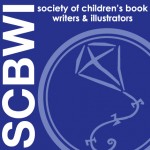by Tracy Barrett (W&M contributor)
 A few weeks ago I attended the 42nd annual Summer Conference of the Society of Children’s Book Writers and Illustrators. The keynote speakers were stars—writers, illustrators, editors, agents, publicists—and the breakout sessions covered every aspect of the industry from craft to publicity to how to negotiate a contract, and more.
A few weeks ago I attended the 42nd annual Summer Conference of the Society of Children’s Book Writers and Illustrators. The keynote speakers were stars—writers, illustrators, editors, agents, publicists—and the breakout sessions covered every aspect of the industry from craft to publicity to how to negotiate a contract, and more.
I gleaned several nuggets that will be helpful for writing historical fiction.
Deborah Halverson offered a session on setting. I’ve been to lots of sessions on plot, character, and pacing, but I’d never before seen one on setting. Setting’s just wallpaper, right? You provide enough to situate your reader in the context of your story, but then move on to more important things. I went anyway, mostly out of curiosity; creating a realistic setting is crucial for someone writing historical fiction (and also because I’m a big fan of Deborah’s blog, Dear Editor). I thought that it would be interesting but that I’d be lucky to get even one practical tip.
I wound up with lots more than one. I scribbled all over the handout, which provided examples of setting used to advance the plot and illuminate character. For instance (paraphrasing):
“What are you doing here?” he asked, pushing his bangs out of his eyes.
vs.
“What are you doing here?” he asked, using a handkerchief to turn the filthy doorknob.
The over-used bang-pushing doesn’t add anything to the plot or character (unless the character can’t afford a haircut) whereas in the second example, we learn that he is fastidious and that something is bad wrong in the house.
Deborah also spoke to the importance of sprinkling in bits of setting rather than describing it in one big information dump, again with many examples.
Another tip for writers of all genres: when describing a setting (or a character), add a quirky detail to make it real. Give a dragon crossed eyes, add a face-shaped knot to a board in an old barn (these are my examples; Deborah’s were better). It occurred to me that the house in It’s a Wonderful Life is a pretty generic rambling old ruin. But what detail does everyone remember, the one that turns the house from generic to specific? It’s the broken wooden ornament on the newel post, which drives Stewart’s character crazy until the end, when he kisses it.
I also picked up tips from a panel on world-building with four science-fiction writers (Veronica Rossi, Cynthia Hand, Brodi Ashton, and Tahereh Mafi). It occurred to me that science-fiction authors and historical-fiction authors face similar challenges:
- We need to create an unfamiliar world in our readers’ minds without piling on description.
- Usually our main character is a native of that world and wouldn’t comment on it (“Gee, there sure are a lot of slaves here in ancient Rome!” “It’s perfectly normal for parents to choose who you’ll marry!” “The Venusians are so weird-looking!” etc.), so we have to figure out a different way to convey that information.
- A lot of research is required; I can’t have my characters using a cell phone and a science-fiction writer has to respect the laws of physics, or at least know what they are so she has an explanation for why she’s violating them. (A problem for me is avoiding research rapture—it’s all too obvious when an author is too much in love with a fact to leave it out even when it doesn’t advance the story, add to the character, or do anything other than shout, “ISN’T THIS COOL?”)
I sometimes think that although obviously I don’t know everything about writing, there’s not much left for me to learn in a one-hour conference session. Not true, as I found out a few weeks ago.
If you too are interested in learning more about writing historical fiction for young readers (children and young adults), please check out the Highlights Foundation’s Whole Novel Workshop on writing historical fiction, Nov. 3-9. I’m on the faculty!
 Tracy Barrett is the author of numerous books for young readers, most recently Dark of the Moon (Harcourt) and the Sherlock Files series (Henry Holt). Forthcoming from Harlequin Teen in July, 2014 is The Stepsister’s Tale. She lives in Nashville, TN, where until recently she taught Italian, Humanities, and Women’s Studies at Vanderbilt University, before retiring to write full-time. Visit her website and her blog.
Tracy Barrett is the author of numerous books for young readers, most recently Dark of the Moon (Harcourt) and the Sherlock Files series (Henry Holt). Forthcoming from Harlequin Teen in July, 2014 is The Stepsister’s Tale. She lives in Nashville, TN, where until recently she taught Italian, Humanities, and Women’s Studies at Vanderbilt University, before retiring to write full-time. Visit her website and her blog.
